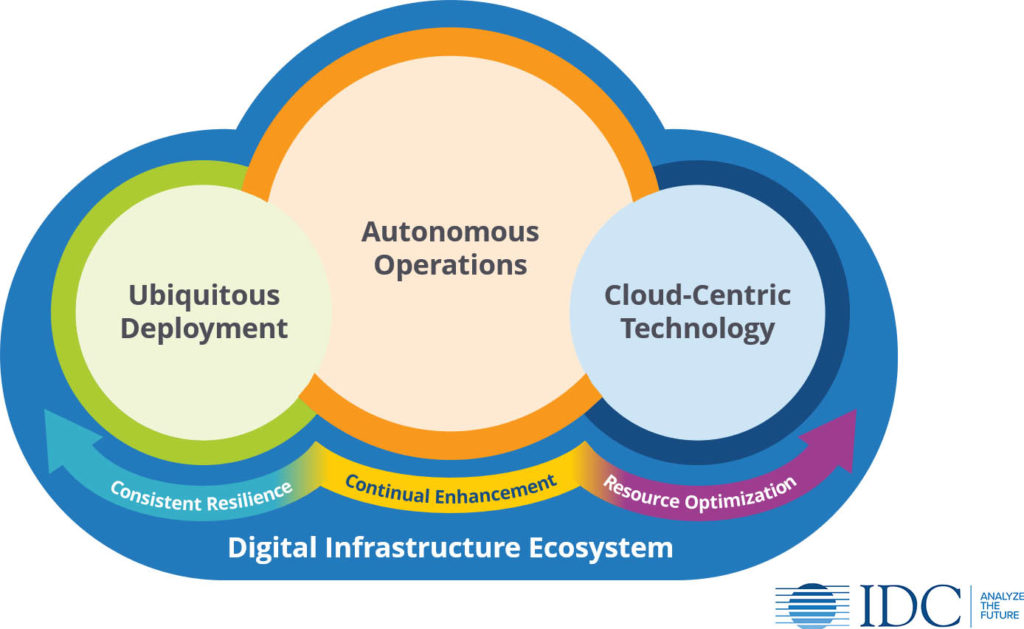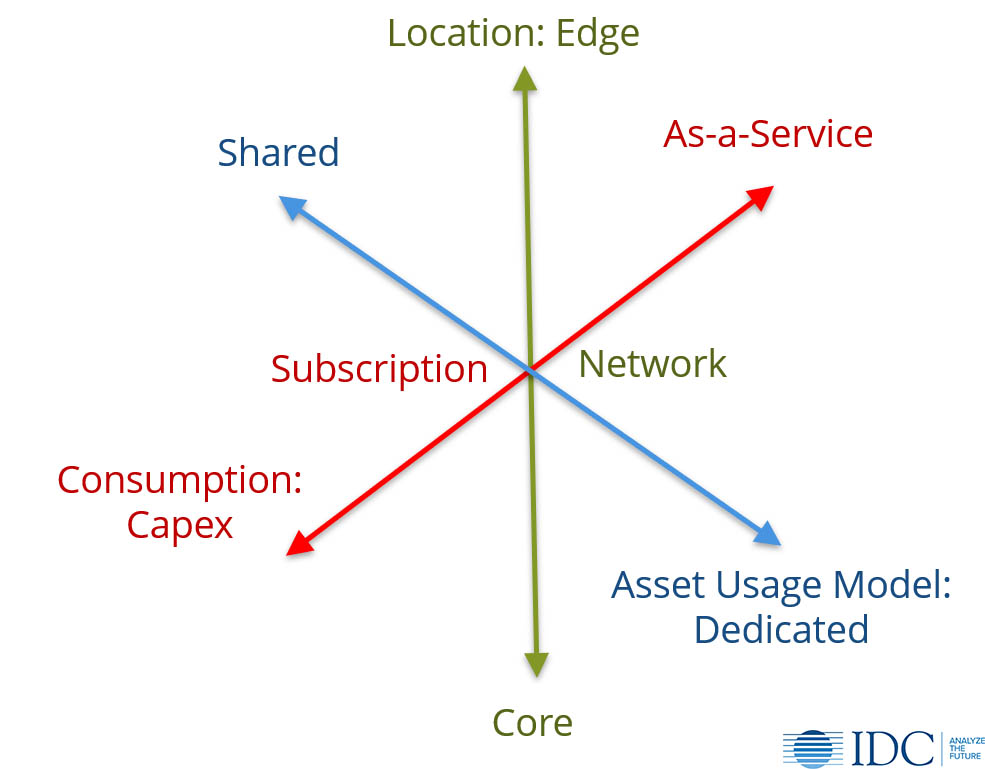IT infrastructure is at the core of your enterprise, and has been for decades. You’ve depended on a wide range of technology, deployment and service companies to help you leverage a steady pipeline of hardware, software and resource abstraction innovations during that period. But, let’s face the facts. It likely took years for your company to onboard new technologies, and even then, only in limited deployments and locations and with increases in operational complexity.
The digital services that you are developing to deliver modern and increasingly automated customer/work experiences and intelligent business operational systems depend on early access to innovative but resilient and trusted technology at the physical, logical, and data levels – anywhere. IDC predicts that these evolving needs of the future enterprise will drive the following developments:
- By 2021, based on lessons learned, over 80% of your competitors will put a mechanism in place to shift to cloud-centric digital infrastructure twice as fast as before the pandemic.
- By 2023, you will depend upon digital infrastructure as the underlying platform for all of your IT and business automation initiatives, everywhere.
- By 2024, more than 80% of your competitors will overhaul relationships with infrastructure providers across the ecosystem to better execute on a digital strategy that enables ubiquitous deployment of resources and far greater automation of IT operations.
Digital Infrastructure Defined
Digital infrastructure, built on a cloud foundation, focuses on ensuring ever faster delivery of innovative infrastructure hardware, software, resource abstraction, and process technologies to support the development and continual refinement of resilient digital services and digital experiences. By shifting to digital infrastructure, you can ensure ever faster delivery of innovative hardware, software, and abstraction technologies to support reliable digital services and digital experiences.

This shift from infrastructure to digital infrastructure can be likened to the transition from cold-blooded to warm-blooded animals. Cold-blooded animals were highly successful and remain important parts of the earth’s biological system. The advent of warm-blooded animals, however, dramatically altered the biosphere. They developed new systems for processing and storing energy that provide them with the speed and endurance to expand into a dramatically wider range of climatic and ecological niches than their cold-blooded compatriots.
The same transition needs to happen with your infrastructure. Your IT teams must not rely solely on well-established models for acquiring, deploying, and operating siloed technologies of compute, storage, and network systems and software. Digital infrastructure is not just bought, deployed, maintained, and replaced. It is a set of ubiquitous, self-regulating, cloud-centric resources that are consumable anywhere but are centrally governed.
Ubiquitous Deployment Makes Digital Infrastructure More Adaptive and Flexible
Effective use of and timely access to innovative, yet resilient, infrastructure anywhere and everywhere is imperative as you are asked to support adaptive, resilient, secure, and compliant digital business models.
Ubiquitous Deployment ensures you have the requisite responsiveness, scalability, and resiliency of the dedicated infrastructure assets deployed within your own facilities while taking advantage of third-party provided shared and dedicated infrastructure resources. Your organization must also be able to leverage a range of consumption models from upfront CapEx acquisition to as-a-Service to align infrastructure investment with business requirements.

Digital infrastructure does not just reside in your central enterprise’s or your cloud service provider’s datacenters. It includes the assets and resources in locations, such as network multi-access edge computing nodes (MECs), campuses, and metro colocation facilities that deliver enhanced customer experiences, embed intelligence/automation into business operations, and support ongoing industry innovation.
Automating IT Operations Is the Ultimate Objective
The most significant change for your enterprise and your IT organization when it comes to digital infrastructure is the growing automation of IT operations. Autonomous operations, built on proactive AI/ML-powered analytics, policy-driven automation, and low-code serverless workflows, enables consistent self-driving infrastructure that spans all your physical and logical assets. DevOps teams can quickly access resources while the IT team can rely on intrinsically provided guardrails to limit business risks.
You can move your infrastructure operations teams away from reactive monitoring, service request, ad hoc provisioning, and remediation strategies. By building on intelligent, autonomous operations, you can deliver greater levels of workload portability, consumption-based usage, and support for highly dynamic agile applications while keeping a handle on costs and security compliance.
Establish a Digital Strategy for Infrastructure: Expand Your KPIs
The pace of your transition to cloud-centric digital infrastructure depends upon a commitment to new key performance indicators for infrastructure. You need to set a digital strategy that ensures quick deployment and effective operation of the underlying resources. The end state is infrastructure that is always optimized, resilient, and self-regulating and enhancing. The successful execution of this digital strategy requires you to introduce three new Key Performance Indicators (KPIs) for your IT teams and your infrastructure ecosystem partners:
- Resource Optimization: No resources wasted, or opportunities missed
- Evaluate solutions based on their ability to do more for less.
- Look for platforms that enable agile and consistent scaling up and scaling down of capacity.
- Require solutions that improve ease of application mobility across infrastructure in different locations.
- Consistent Resiliency: Flattening the curve for recovery in a crisis
- Mandate that new/modernized applications be designed to leverage flexible digital infrastructure resources that minimize outright failure through graceful degradation.
- Base business continuity plans on the assumption that seamless failover and failback replaces mitigation of loss.
- Continuous Enhancement: Eliminate existing technical debt and minimize future accumulation
- Evaluate partners and solutions based on their ability to provide fast access to new technologies, capabilities, and services.
- Establish a preference for solutions that include automated/proactive upgrades of software and hardware assets to minimize the accumulation of technical debt and security risk.
- Weigh infrastructure and application modernization/optimization efforts based on their ability to progressively reduce stranded capacity.
Learn more about the future of Digital Infrastructure and how it supports digital services and experiences:




